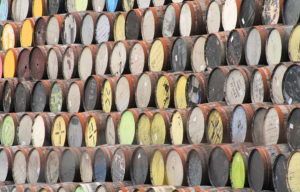Whiskey For Beginners

(Credit: Josh Haslam/Wikimedia Commons CC BY 2.0
Understanding the various whiskey flavor profiles and how they were created will help you better understand whiskey and its diverse flavors. Following that, you’ll be able to pick whiskeys depending on your preferences.
Although many businesses are now selling white whiskey, whiskey is a transparent liquid without any distinctive whiskey characteristics before it is placed in wood casks to age.
The pure spirit’s interaction with the wood initiates various fascinating processes, giving the product its unique flavors.
While there have been some attempts to speed up the aging process using cutting-edge scientific techniques, the time-tested aging method in oak casks is the only one that produces the end product that has been adored worldwide for centuries.
What gives whiskey its flavor?
Although whiskey’s contact with wood during maturation imparts most of its flavors and fragrances, processes undertaken before can also impact the end product’s flavor.
Where all of these flavor components originate from is now the big question. What gives whiskey its distinctive flavor?
1. Barley
The grain’s qualities will determine the quality of a whiskey. Barley frequently forms substances like Furan and Hexanal. The former has flavors similar to nutty caramel, while the latter has lemony grass flavors.
Barley can also develop and gain more flavor throughout the malting process. When barley is dried, the subsequent reaction can result in caramelization and sweet, toasted flavors. Some distilleries add smokey and medicinal overtones by drying barley with peat smoke.
2. Fermentation
Yeast does more than merely consume sugar and produce bubbles and alcohol as by-products. Fermentation produces many flavors, most notably the esters in your whiskey.
Shorter esters like ethyl lactate and ethyl acetate taste like butter and green apples, respectively. Some longer esters have a more significant impact on the texture rather than flavor. For instance, ethyl palmitate can give the whiskey you drink as you play blackjack on Ripper Casino a creamy or waxy texture.
Since different types of yeast have varying fermentation times and temperatures, it will ultimately result in varying concentrations of each compound hence different flavor profiles.
3. Distillation
While specific flavor profiles are created during the distillation process, this process’ primary function is to eliminate many flavors. The foreshots and feints—the first and last liquids to exit the still—are used to filter out less desirable esters and aldehydes as well as more hazardous alcohols like methanol.
A good distiller knows how to find the transition between these.
4. Casks
The ultimate flavor of the whiskey is significantly influenced by maturation. When alcohol is aged in oak barrels, new flavorings like cyclotene, eugenol and vanillin are added. Most Scotch whiskey casks will also have previously held a different beverage, leaving a distinct flavor mark on the whiskey.
Because oxygen impacts how chemicals form or degrade throughout maturation, an alcohol molecule can oxidize to make an aldehyde, which can then oxidize to form an acid. The latter can then mix with another alcohol molecule to form an ester, which can then combine to form another new flavor.
Whiskey mellows and develops with time through this continuous development and the evaporation of more volatile substances.
Due to this intricate maturation process, single malt has a wide range of flavor possibilities, which is also why the traditional combination of malted barley, yeast, water, and oak produces a distinct “Scotch” flavor.
In a nutshell, these reasons are why whisky tastes the way it does.
Whiskey types
What distinguishes a blended Scotch whisky from a single malt whisky? Or between a rye, a Tennessee whiskey, a bourbon, a whisky, and a whiskey?
In its broadest sense, “whiskey” refers to any alcoholic beverage made by distilling malt. Any grain that has been allowed to germinate, especially rye or barley, and then dried is considered malt. Malting refers to the technique used to create malt.
The word “whisky” or “whiskey” is usually used depending on where it was produced. While it is more frequently spelled with an “e” in the US and Ireland, it is spelled without an “e” in Scotland, Canada, Japan, and other countries.
The main differences between types of whiskey are down to these main things: the grain used, how long the whiskey has matured, the production process, and where the whiskey was made. The most common types of whiskey are.
- Scotch – Scotland
- Bourbon – USA
- Irish Whiskey – Ireland
- Canadian Whiskey – Canada
- Japanese Whisky – Japan
Different flavor categories that whiskey falls under?
Whiskey has eight taste families, each of which has its subcategories. Finding complex notes in a whiskey is easier if you know even the names of these families. The families and their subcategories are as follows.
- Fruity – Dried fruit, Cooked Fruit, Citric, Fresh Fruit,
- Winey – Oily, Chocolate, Nutty, Sherries
- Sulphuric – Vegetative, Sandy, Rubbery, Coal/Gas
- Peaty – Mossy, Kippery, Medicinal, Smokey
- Cereal – Husky, Yeasty, Malt Extract Cooked Mash
- Woody – Toasted, Vanilla, New Wood, Old Wood
- Floral – Fragrant, Leafy, Green House Hay-like
- Feinty – Leatherly, Tobacco, Plastic, Sweaty
While some of these flavors may not seem appealing on their own, you’d be surprised at how unusual flavors may come together to make a great whiskey.
Additionally, it is also quite acceptable to start with whiskeys that have a more robust fruit flavor or deviate from it.
The bottom line
This information is great for someone who needs to learn more about whiskey. It is best to experiment with various flavor characteristics to determine what makes a good whiskey, but it all comes down to what you enjoy.




